“You’re going to rally school!”
I couldn’t believe what I was hearing. For my 30th birthday, my family surprised me with something I have wanted to do since I first played Gran Turismo 2: go to rally school and learn the fine art of driving on dirt.
A few days later, I found myself on a plane headed to the Rally Ready Driving School, just outside of Austin, Texas. At the end of a secluded dirt road – about 20 minutes past Circuit of the Americas – I finally arrived at the “Rally Ranch”, where I spotted the line of cars and twisty dirt roads that were soon to be at my disposal.
Owned and operated by three-time Pikes Peak champion Dave Carapetyan, Rally Ready is the newest of only four rally schools in the country, having opened in 2012.

The school would not exist were it not for a special little video game series called Gran Turismo. As a young teenager, Dave was most interested in playing music with his band – until he sat down to check out a friend’s copy of Gran Turismo 3: A-Spec.
He loved it, of course, but what really got his attention was the game’s rally mode. Dave was fascinated with how the cars handled on dirt, and learned to manage weight transfer, oversteer, braking, and throttle control.
After refining his skills, he was completely hooked; the game had changed his life forever, and he dropped music to pursue his new passion – competitive rally racing.
That gamble paid off, and in 2008, he took home a major trophy, winning the Open division at the Pikes Peak International Hill Climb.
That kicked off a three-year streak of domination, as “Texas Dave” reigned as Pikes Peak champion in both 2009 and 2010. In 2012, he turned his attention to Rally Ready, which moved to its new permanent home at the Rally Ranch just last year. You can check out their website right here.
Getting Dirty with Your Left Foot
After I climbed the stairs to the small office and classroom at the Rally Ranch, I knew I was in the right place: the walls were adorned with pictures of rally cars, a TV was showing the WRC broadcast from Sweden, and there was excited chatter among everyone in the room. There weren’t too many of us, though – to keep the quality of instruction high, class sizes are small, with no more than seven students per group.
Dave began with a quick introduction to the school and our instructors (they’re an experienced team of drivers – learn more about them here). He made it clear that this wouldn’t just be about theory in the classroom: we’d be getting a lot of seat time in the cars to practice what we were learning about. The primary topic of day 1 – and one of the most important foundations in the school’s curriculum – is left-foot braking.
The goal of left-foot braking is to give the driver more control over the car’s rotation through a corner. By controlling the car’s weight distribution between the front and rear, the brake pedal becomes the most important input a driver has while negotiating a turn. As the car’s front wheels turn into the corner, brake pressure moves weight forward, providing them with more grip. As they dig in, the rear tires have less weight (and less traction), the car begins to oversteer, and the back-end slides out. It all points the car in the right direction, without losing too much momentum or speed on the slippery surface below.
Sure, it sounds easy enough – especially for a sim-racer like me who has been left-foot-braking since they bought their first Logitech wheel – but doing it in a real car is a surprising challenge.
To help us get comfortable with it, the Rally Ready instructors send us down the school’s slalom course, which basically consists of a long, flat stretch of dirt with two circular areas at each end.
The goal: drive up to speed in second gear, shift to neutral, and stab the brake with your left foot to bring the car to a stop. It sounds almost comically simple, but I screwed it up – and so did every other student I rode along with. Clearly, re-wiring years of footwork muscle memory wasn’t going to be as easy!
The first few runs felt awkward and deliberate, like I was learning to drive with a manual gearbox all over again, but I quickly started to get the hang of it.
The Cars
This would be a good time to talk about the cars: unlike most driving schools, which offer students a fleet of homogenous, spec vehicles, you don’t really know what you’re going to be driving at Rally Ready. They provide a diverse collection, which allows students to experience different drivetrains, manufacturers, and body types. In my weekend at the school, I found myself behind the wheel of two Honda Civics, two Acura Integras, three Subaru Imprezas, and a surprisingly fun Hyundai Accent.
The vehicular diversity was both a blessing and something of a challenge: on one hand, it was an amazing opportunity to drive so many different types of cars and to explore the real differences between front- and all-wheel drive.
On the other hand, it was a bit overwhelming: just as I thought I was getting a feel for an exercise in one car, I was out and into something that responds in a completely different way. It keeps you on your toes, but the relaxed nature of the school and the instructors means it’s easy enough to spend the majority of your time in a car you like best.
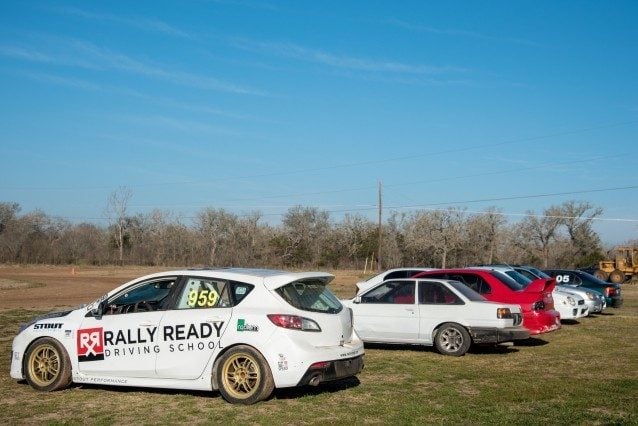
There’s another thing about Rally Ready’s cars that makes them different – both the ABS and power-braking systems are completely disabled. That means the brake pedal is very heavy, requiring a lot of pressure to slow down or bring the car to a stop, even at slow speeds. Aside from beefing up your glutes, the modified brakes serve a very real purpose, granting you a finer degree of control in braking input.
The Skidpad
After getting comfortable with the fundamentals of left-foot braking, it was time to see exactly how it could be used to turn the car. For this, we moved over to the skidpad, which basically consists of a large, flat, dirt figure-8.
Our first exercise was one of the most surprising: we were instructed to drive around one of the circles in second gear, lock the steering wheel at roughly a half turn, and push the throttle to the floor. The only input we were allowed to modulate was the brake pedal.
Doing this – the first few times, at least – feels as crazy as it sounds. The car immediately begins to understeer, pushing the car to the outside of the circle in just a second or two. As you slam the brakes, all of that understeer suddenly becomes oversteer; the back end of the car slides out, and suddenly you find the front of the car pointed into the grassy (and bumpy/rocky!) inner circle of the skidpad. You then release the brake pressure, restoring understeer and pushing the car outwards.
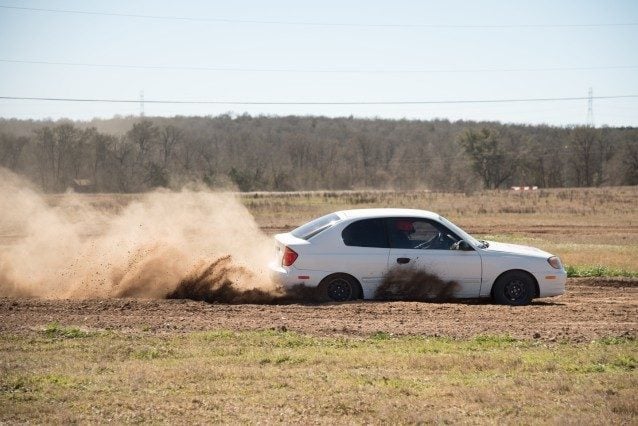
The urge to change your steering input or reduce throttle is overwhelming, but the instructors are riding along, providing constant feedback and reminding you to… well, not do that.
If you get it right, this forms a repeating inside-outside line around the skidpad, as the car alternates between understeer and oversteer. It all happens very quickly, and it takes everyone a few times to get a feel for it. Once you do get into that flow, though, you know it – it feels really good.
Figure-∞s
As everyone in the class started to get comfortable, it was time to change things up, and we were unleashed onto the skidpad’s second circle. This added another variable, as we had to alternate our steering between the left and right turns, managing our oversteer as the car snapped back and forth.
The same principles learned in the first exercise still applied, and we weren’t allowed to lift off the throttle at any point throughout the figure-8. Turn the wheel, stomp the brakes, slide around the outside of one circle, lift the brakes, dart towards the other circle in the “straight”, and repeat. If you’re not having fun at this stage, you should probably check your pulse: it’s very addictive, and you can feel yourself learning and getting faster.
The Slalom
After lunch (home-made fajitas!) in the Rally Ranch house with our classmates and instructors, we were finally ready for the grand-daddy of rally driving exercises: the slalom course!
The slalom allowed us to combine all the skills we’d been working on, plus a few more. It’s very different from an asphalt slalom – you have to start managing the car’s weight transfer far in advance, initiating its rotation around the next cone earlier than your instincts first suggest.
The key to overcoming this is your eyes. You have to look much farther ahead down the course than you want, somehow overcoming the urge to look just past the front of the car or that cone you’re about to hit.
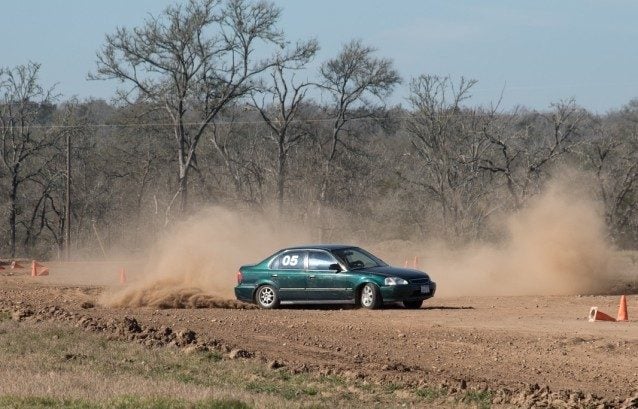
It’s not easy, and to keep us from getting too down on ourselves, our instructors sympathetically remind us that even they can rarely make a clean run through this thing. One small mistake, and you’re pretty much ruined (much like actual rallying, in fact…).
As it always does when you’re having fun, the time absolutely flies by, and just as you’re really getting into it, it’s time to call it a day…
Day 2: Cones Are Trees
The second day of driving schools are always my favorite – you’re more relaxed, you’ve got a better feel for the cars, and you know what you’re going to be doing. Rally school is no exception, and after having slept on my newfound driving skills, I couldn’t wait to jump back in the cars.
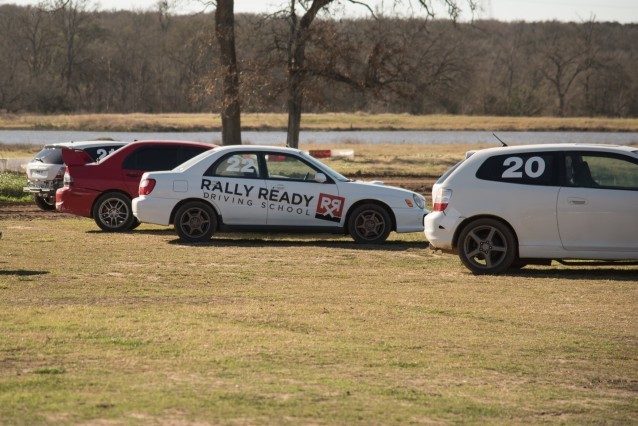
We returned to the slalom, but this time, things had changed – it wasn’t just about alternating from side to side, we had to follow varying directional cones as well. This made it less of a slalom and more of an actual “course”, as we were able to build more speed to continue challenging our growing skill set.
Throughout all this, you’re able to ride along with other students, which I did as much as I could were I not behind the wheel myself. I found this to be an interesting way to better process what we were learning, and watching other people make mistakes made me more aware of my own.
Instructors were in and out of the cars, but they were always watching and were always in communication. Everyone carried radios with them, so you could hear what they were saying to other students, and they provided instant feedback after each run down the course.
They kept pushing us to go faster, until finally, the cones were declared “trees” – if you hit one, you’re out of the car until the next exercise. Of course, everyone wants as much seat time as they can get, so this little rule change upped the pressure a bit and made it even more fun. I can only imagine what it must actually be like to compete in a rally, where one little mistake means that you’re not only out of the race, but likely thousands of dollars…
Advanced Slalom: Eyes Up!
As Dave reminded us at the start of the school, racing drivers see the same corner a thousand times, and rally drivers see a thousand corners one time. This makes road awareness one of the rally driving’s most important skills, and it’s what we practiced next.
To do this, we kept making runs down the slalom course, but it was constantly changing – with nearly every pass, the instructors ran out onto the course and added, removed, and repositioned cones. This created something like an autocross circuit on dirt that looked different on each lap – you never knew what you were about to encounter, and it forced you to look and plan farther down the road to keep from embarrassing yourself.
We all started making lots of mistakes, which really drove the instructor’s point home and gave me an entirely new appreciation for a co-driver’s pace notes. Regardless, some of the corner configurations were really satisfying to slide through at just the right angle, and I could feel myself getting better with each trip.
Pendulum Turns: The “Scandinavian Flick”
The final exercise of the day involved the pendulum turn, a very important rally driving technique also known as the “Scandinavian flick”. It basically involves turning slightly away from a corner immediately before turning back into it, hence the “flick”. It helps break traction from the rear wheels and increase the angular momentum into the turn, which makes it an especially useful technique for corners with increasing radius.
It can be difficult to learn, but the way we tackled it made it a bit easier to grasp. We started by driving 40mph, turning the wheel, and pressing the brakes to bring the car around the side of an extended white-and-red barrier. Then, we turn the wheel back towards the main corner, tap the brakes again, and rotate the car around the back side of the barrier.
Everything happens fast, but when you get it right, you know it. Although flying towards a rather sturdy barrier at speed was a bit intimidating on the first run, I quickly got comfortable adding more speed, which actually seemed to make the whole exercise easier.
After each run through the pendulum turn, we drove around one of the Rally Ranch’s dirt courses to get back to the starting line. This gave us our first real taste of what a dirt rally stage would be like, though we were under orders to not push too hard just yet…
Going Faster
In our final exercise of the day, the barriers in the pendulum corner area were moved further to the inside, which opened things up and allowed us to carry quite a bit more speed. We were also allowed to push harder through the rally stage, which suddenly brought together everything that we had been learning.
Without thinking about it, I was left-foot braking, inducing oversteer around the corners, looking ahead, and feeling, at least, like a budding rally star.
Alas, just as it was all coming together, it was time to call it a day, and bring my two-day rally school experience to an end. Rally Ready offers a four-day school, where you get to experience their faster and more challenging rally stages on the property.
I got a brief taste of these stages (thanks, Dave!) before I called it a day, which made me seriously consider changing all my travel plans and adding another two days to my trip. They’re really fun, and I can only imagine how much faster I could have become with even more practice – it felt like I was improving with every single corner.
Go to Rally School. Just Do It.
Before my time at Rally Ready, I had more respect for rally drivers than those in any other form of motorsport. After my experience, that respect has grown even more – along with my jealousy of their abilities and opportunities! I don’t believe you can have more fun behind the wheel. Driving around a circuit is thrilling, sure, but successfully sliding sideways through a corner is just so much more satisfying.
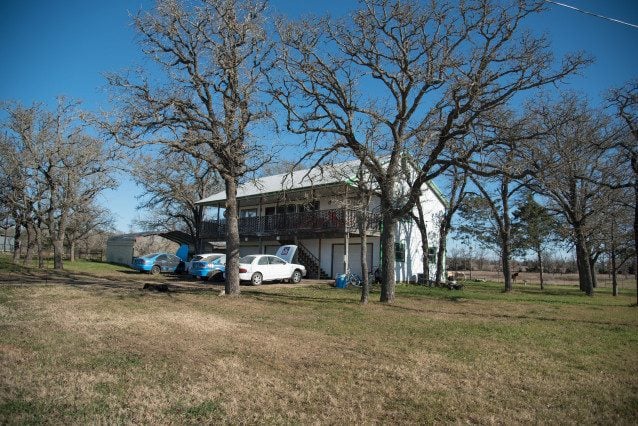
Rally Ready seems to be an excellent place to do it, as well. Unlike other driving schools I’ve attended, there’s no trace of elitism or the pretentious culture that so often surrounds motorsport. Much like the relaxed city of Austin nearby, there’s a rustic, authentic charm to the Rally Ranch that quickly makes it feel like home.
The school’s curriculum builds a solid foundation of rally fundamentals that you can quickly start building upon to get faster and faster. As the instructors lamented during lunch, they often found their outgoing students were as quick as they were, despite their own years of competitive rallying experience!
If you’re looking to go rallying, four days at Rally Ready is probably the best investment you can make in your career (not to mention your health and safety). If you just want to improve your driving skills, have some fun, or have your “best birthday ever”, well… it’s a pretty good place for that, too!
Thanks to Dave, Ophelia, Fielding, Nathan, Hawk, Lila, and the rest of the Rally Ready crew for an amazing weekend! You can learn more about their school at RallyReady.com.


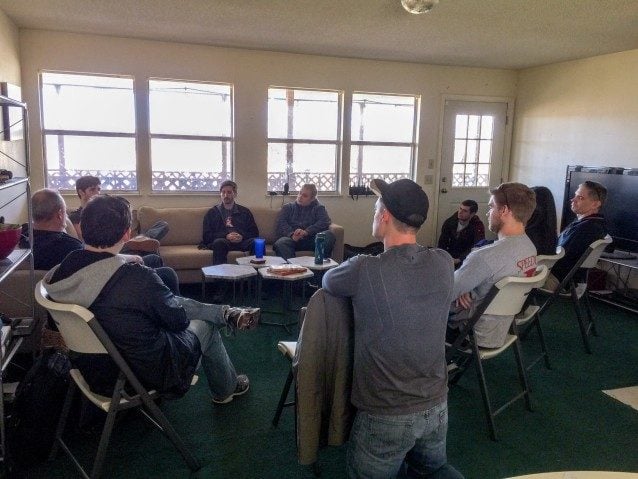
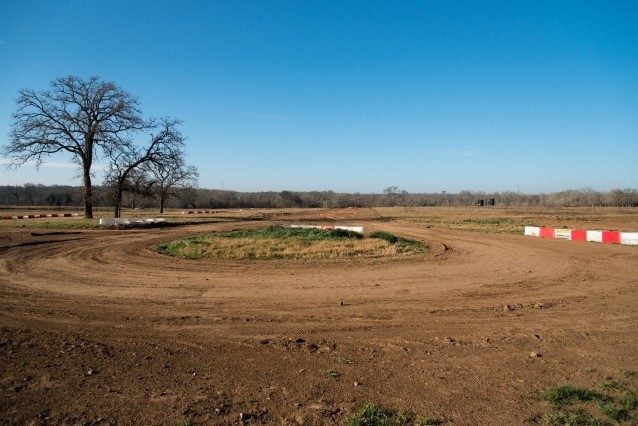
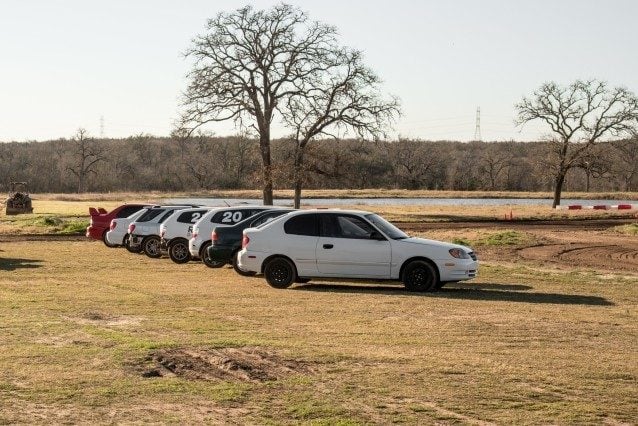
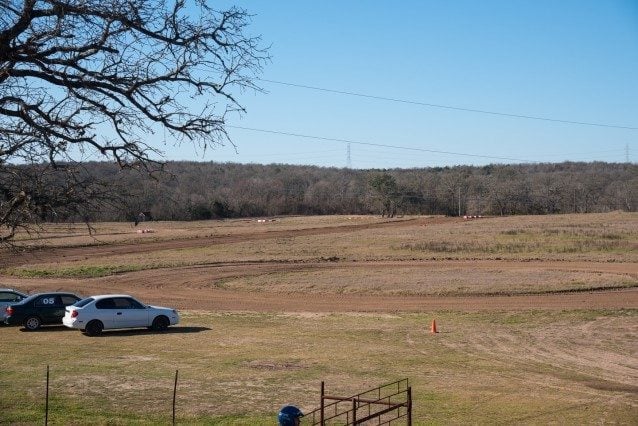
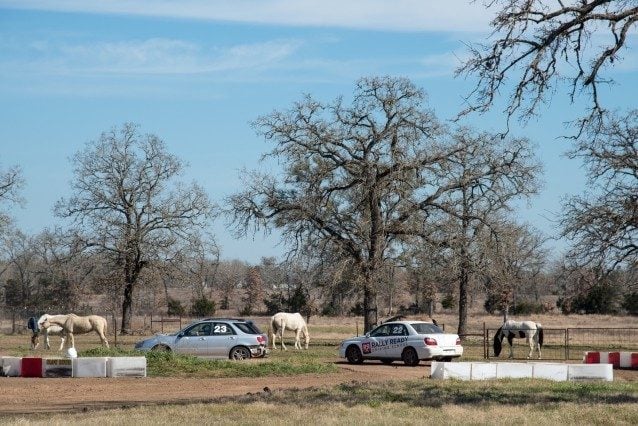
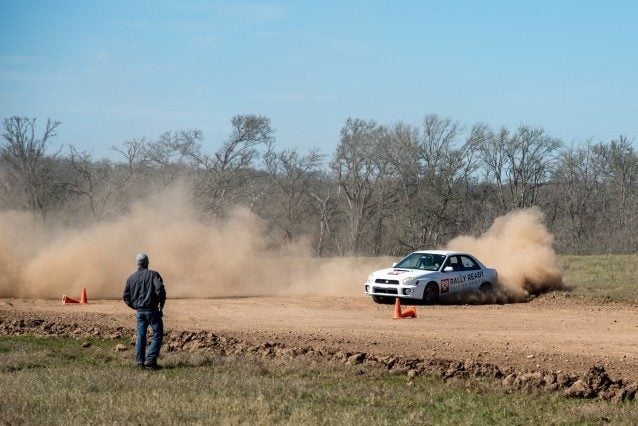
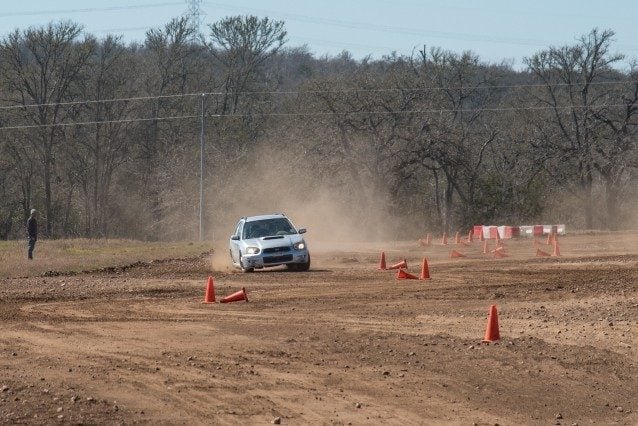
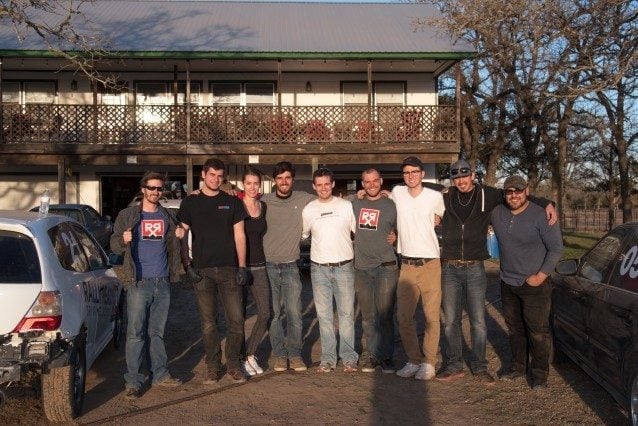








Great report!?
I have done one similar thing in m’y country, in France, on a subaru impreza wrx ?
Wonderfull souvenirs
Those horses take it so cool :D
Nice article!
Awesome man!!!. And happy late birthday as well!! :D
I wish u could be a racer so bad
Very cool, I like rally a lot too, but barely anyone plays it unfortunately. If I was to go to rally school I’d probably try it on snow. The skills will probably help me (or get me into more trouble lol) during the Canadian winters.
Simply awesome Jordan!
Jerome
That looks like fun!
Very cool article, and happy belated birthday. I live in the Austin area and had no idea this existed. It’s a shame that Circuit of the Americas does not allow open driving days. This looks like a great alternative and I’ll have to check this place out!
Thanks! Check it out and tell Dave I said hi.
This was a awesome, great article.
That sounds awesome! I’ve always been a fan of off road rallying.
I’m assuming this is the area near where the Kart track is and close to the Street track (for cars and Motorcycles), in Kyle.
I’ve been there once and road on the dirt with my then Motorcycle and saw some people practicing. Was interesting.
I don’t think so. The Rally Ranch is in Dale, TX.
nice article, I was thinking to attend some driving lessons like that, unfortunately I live in the wrong country and wrong continent… who knows, maybe on some vacations
Harsk100 would love this article.
Like Kolio, I’ve messed with left foot braking…Safe to say that I almost threw myself out of my car too.
It must have been such a nice experience, glad to see dedicated people creating relaxed yet fun experiences for those willing to learn the fine art of rallying.
Now the question is: did you get gold or silver during the tests…?
What a journey! First off, you lost as soon as you said Left Foot Braking. I tried this casually driving one day and almost threw myself through the windshield. LOL.
Thanks for the story, Jordan! Glad you had a great Birthday.
Quite a challenge, isn’t it? I think having the power brakes disabled makes it a bit easier.
I did that before in my 3 series, “I’m going to slightly press the brake and slowly stop.” *G forces kick in, making my push it to the floor* “Wow, wasn’t expecting that!”
due to playing racing games with a wheel and pedals for years now I always left foot brake when driving an automatic (not driving a lot of manual transmissions IRL these days). On occasion I will try right foot braking and now it just feels odd!
Nice real life experience. One guy started with a prayer…
Austin!!!!!!! I live there, I have to look this place up
Lucky you! If I lived in Austin, I’d be there every weekend. Definitely check it out.